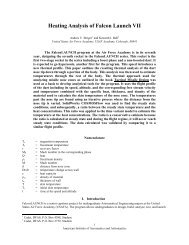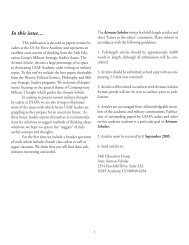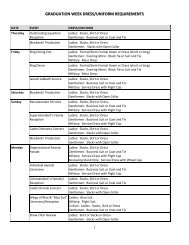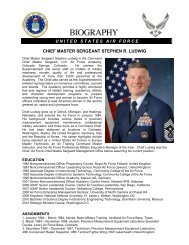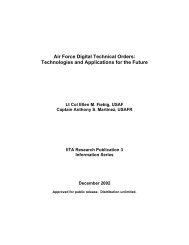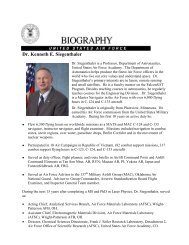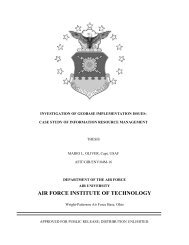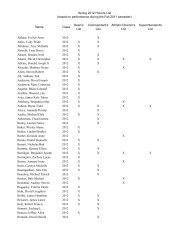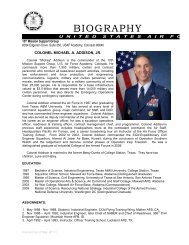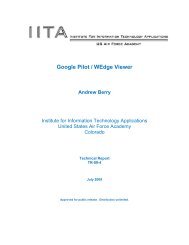the rollback of south africa's biological warfare program
the rollback of south africa's biological warfare program
the rollback of south africa's biological warfare program
You also want an ePaper? Increase the reach of your titles
YUMPU automatically turns print PDFs into web optimized ePapers that Google loves.
use <strong>of</strong> chemical and <strong>biological</strong> agents. Similar tactics were used in Namibia<br />
and Angola by personnel assigned to <strong>the</strong> 5 th Reconnaissance Commandos, by<br />
<strong>the</strong> SAP security branch “crowbar” (koevoet) unit, and by <strong>the</strong> SADF Special<br />
Forces D40 unit. They were also employed in covert support operations for <strong>the</strong><br />
Union for <strong>the</strong> Total Independence <strong>of</strong> Angola (UNITA) and in Operation<br />
Barnacle in <strong>the</strong> 1970s and 1980s. 22 The Civil Cooperation Bureau (CCB) in<br />
South Africa employed many <strong>of</strong> <strong>the</strong>se same tactics against political dissidents<br />
in <strong>the</strong> late 1980s and early 1990s. Toward <strong>the</strong> end <strong>of</strong> <strong>the</strong> apar<strong>the</strong>id era, <strong>the</strong> use<br />
<strong>of</strong> poisons against dissidents became routine CCB practice. By <strong>the</strong> time<br />
Eugene De Kock took charge <strong>of</strong> <strong>the</strong> CCB in 1988, he had a working<br />
relationship and regular contacts with Wouter Basson, <strong>the</strong> director <strong>of</strong> <strong>the</strong> CBW<br />
<strong>program</strong>, Project Coast. Whenever <strong>the</strong> CCB wanted “special tools” for<br />
interrogations or to eliminate political dissidents, Basson was available to<br />
supply customized orders. 23<br />
Variable Effectiveness <strong>of</strong> CBW in Counter-Insurgency and Difficulties<br />
Verifying Use <strong>of</strong> Biological Agents<br />
Evidence <strong>of</strong> <strong>the</strong> use <strong>of</strong> <strong>biological</strong> and toxic agents during <strong>the</strong> Rhodesian war<br />
indicates variability and, in some instances, unintended consequences. For<br />
example, <strong>the</strong> <strong>program</strong> developed by <strong>the</strong> Selous Scouts to poison new blue<br />
jeans that were <strong>the</strong>n to be worn by ZANLA guerrillas was aborted, after<br />
several farmers died when <strong>the</strong>y purchased and wore <strong>the</strong> jeans. Selous Scouts<br />
intermediaries, who were paid for each pair <strong>of</strong> jeans delivered to guerrillas,<br />
had started to sell <strong>the</strong> pants to stores that serviced rural populations. After <strong>the</strong><br />
Selous Scouts received reports that ZANLA rebels were using a village in Tete<br />
province, Mozambique, <strong>the</strong> Selous Scouts introduced poisonous <strong>biological</strong><br />
agents into <strong>the</strong> Ruya River to kill <strong>the</strong> guerrillas and <strong>the</strong>ir supporters. Despite<br />
intensive intelligence ga<strong>the</strong>ring efforts, no effects on <strong>the</strong> guerrillas were<br />
detected. However, over 200 villagers died suddenly after drinking <strong>the</strong> water in<br />
<strong>the</strong> reservoir that <strong>the</strong> Selous Scouts had poisoned. 24<br />
9




